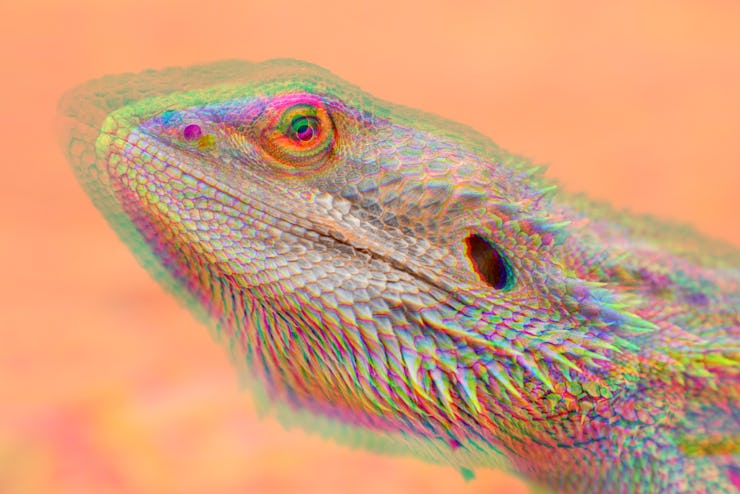6 animals that can change sexes — and the scientific reason why
Meet the sex-changing creatures of the animal kingdom

Here’s something Finding Nemo forgot to mention: clownfish can change sex, depending on their social setup.
Sexual plasticity is found across the animal kingdom, from the jungles of Burundi to the tropical waters of the western Atlantic Ocean.
This phenomenon — that ability to live as one sex, then switch to the other — is known as sequential hermaphroditism. Why it’s relatively rare is still a mystery: Scientists say that, overall, the advantages of switching sexes outweigh the costs. After the 2019 discovery that stress causes some fish to change their sex, researchers announced sexual fate “may be inherently plastic in all vertebrates.”
Most recently, scientists discovered heat can cause central bearded dragons to change their sex. Here’s why that is plus the science behind 5 other sex-changing animals.
6. Central bearded dragons (Pogona vitticeps)
When it’s hot out, some animals — like your pet dog — pant profusely. Others burrow underground. Some, like elephants, even radiate heat from their ears.
But here’s an even wilder fact: the heat causes some animals to change their sex.
A new study published in the journal PLOS Genetics suggests central bearded dragons (Pogona vitticeps) embryos can activate one of two different sets of genes to become female.
The first set of genes involves the typical sex chromosomes. The second set relies on temperature-dependent sex determination, allowing the animal to change sex under specific heat conditions
The centra bearded dragon (Pogona vitticeps), which can change sex under high temperatures.
Female bearded dragons possess ZW chromosomes and male bearded dragons have ZZ chromosomes. But high temperature can reverse the course of the male bearded dragon’s chromosomes, causing them to become female before they even hatch.
But bearded dragons aren’t alone when it comes to shifting between the sexes. Some animals can switch sexes depending on external factors or for no reason at all.
5. Common Reed Frogs (Hyperolius viridijlavus ommatostictus)
Common reed frog (Hyperolius viridiflavus).
Scientists have long known about spontaneous sex changes in common reed frogs, a species found in Burundi, Ethiopia, and other African nations.
A 1989 study found that 7 out of 24 of the frog subjects switched from female to male — a specific type of sex change known as protogyny. This reportedly occurs when a population is too heavily skewed toward males.
In more alarming news, humans may also be causing sex changes in frogs. A 2010 study found that the pesticide Atrazine caused sex changes in 1 in 10 frogs, in addition to emasculating three-quarters of the remaining frogs.
4. Clownfish (Amphiprioninae)
A clownfish in an anemone.
As researchers for the Beckman Institute explain in this video, if the dominant clownfish female leaves or gets removed from a group of clownfish, the dominant male will take her place and become female.
Other research shows that the brain may play a strong role in sex change in clownfish. A 2016 study suggests a response in the brain related to the aromatase gene is also associated with sex change.
3. Green sea turtles (Chelonia mydas)
A green sea turtle swims in the Great Barrier Reef.
Much like the bearded dragon, female sea turtles can also change sex depending on the temperature — but only prior to birth.
A 2018 study found that green sea turtle embryos in the Great Barrier Reef change sex to female more frequently as temperatures increase.
With global warming, it’s possible that “complete feminization of this population” is possible, write the researchers — foreboding news for the future of the species.
2. Slipper limpet (Crepidula fornicata)
A common slipper shell, also known as a slipper limpet.
Slipper limpets, a type of sea snail also known as the common slipper shell, change sex from male to female as they grow older.
This sex change can also be an evolutionarily beneficial strategy. According to a 2019 study, bigger male slipper limpets with the potential to reproduce with a female will delay changing sex — while an isolated, smaller male will often transition more quickly.
On the other hand, contact between two males can produce surprising sex changes. A 2015 study found that, when two male slipper limpets are in contact, the larger male will transition to female more quickly than the smaller one.
1. Bluehead wrasse (Thalassoma bifasciatum)
A bluehead wrasse swims off the coast of Venezuela.
Bluehead wrasse employ a unique survival mechanism, or “alternative male strategy,” according to a 2006 study.
The fish start off and reproduce as female, but then shift to being male following successful reproduction.
It seems like the sex change comes with a few behavioral changes as well. A subsequent 2013 study found that the bluehead wrasse “exhibits rapid increases in aggressive and male-typical courtship behavior as females undergo sex change.”